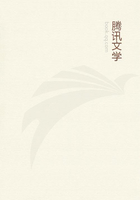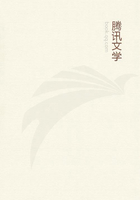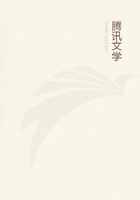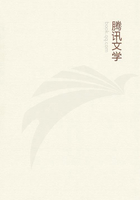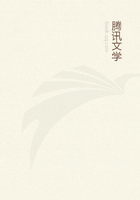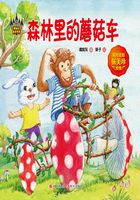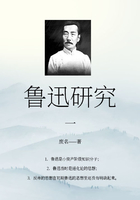1. Animal Embodiments of the Corn-spirit.
IN SOME of the examples which I have cited to establish the meaning of the term neck as applied to the last sheaf, the corn-spirit appears in animal form as a gander, a goat, a hare, a cat, and a fox. This introduces us to a new aspect of the corn-spirit, which we must now examine. By doing so we shall not only have fresh examples of killing the god, but may hope also to clear up some points which remain obscure in the myths and worship of Adonis, Attis, Osiris, Dionysus, Demeter, and Virbius.
Amongst the many animals whose forms the corn-spirit is supposed to take are the wolf, dog, hare, fox, cock, goose, quail, cat, goat, cow (ox, bull), pig, and horse. In one or other of these shapes the corn-spirit is often believed to be present in the corn, and to be caught or killed in the last sheaf. As the corn is being cut the animal flees before the reapers, and if a reaper is taken ill on the field, he is supposed to have stumbled unwittingly on the corn-spirit, who has thus punished the profane intruder. It is said the Rye-wolf has got hold of him, the Harvest-goat has given him a push.
The person who cuts the last corn or binds the last sheaf gets the name of the animal, as the Rye-wolf, the Rye-sow, the Oats-goat, and so forth, and retains the name sometimes for a year. Also the animal is frequently represented by a puppet made out of the last sheaf or of wood, flowers, and so on, which is carried home amid rejoicings on the last harvest-waggon. Even where the last sheaf is not made up in animal shape, it is often called the Rye-wolf, the Hare, Goat, and so forth. Generally each kind of crop is supposed to have its special animal, which is caught in the last sheaf, and called the Rye-wolf, the Barley-wolf, the Oats-wolf, the Pea-wolf, or the Potato-wolf, according to the crop; but sometimes the figure of the animal is only made up once for all at getting in the last crop of the whole harvest. Sometimes the creature is believed to be killed by the last stroke of the sickle or scythe. But oftener it is thought to live so long as there is corn still unthreshed, and to be caught in the last sheaf threshed. Hence the man who gives the last stroke with the flail is told that he has got the Corn-sow, the Threshing-dog, or the like. When the threshing is finished, a puppet is made in the form of the animal, and this is carried by the thresher of the last sheaf to a neighbouring farm, where the threshing is still going on. This again shows that the corn-spirit is believed to live wherever the corn is still being threshed. Sometimes the thresher of the last sheaf himself represents the animal; and if the people of the next farm, who are still threshing, catch him, they treat him like the animal he represents, by shutting him up in the pig-sty, calling him with the cries commonly addressed to pigs, and so forth.
These general statements will now be illustrated by examples.
2. The Corn-spirit as a Wolf or a Dog.
WE begin with the corn-spirit conceived as a wolf or a dog. This conception is common in France, Germany, and Slavonic countries. Thus, when the wind sets the corn in wave-like motion the peasants often say, The Wolf is going over, or through, the corn, the Rye-wolf is rushing over the field, the Wolf is in the corn, the mad Dog is in the corn, the big Dog is there. When children wish to go into the corn-fields to pluck ears or gather the blue corn-flowers, they are warned not to do so, for the big Dog sits in the corn, or the Wolf sits in the corn, and will tear you in pieces, the Wolf will eat you. The wolf against whom the children are warned is not a common wolf, for he is often spoken of as the Corn-wolf, Rye-wolf, or the like; thus they say, The Rye-wolf will come and eat you up, children, the Rye-wolf will carry you off, and so forth. Still he has all the outward appearance of a wolf. For in the neighbourhood of Feilenhof (East Prussia), when a wolf was seen running through a field, the peasants used to watch whether he carried his tail in the air or dragged it on the ground. If he dragged it on the ground, they went after him, and thanked him for bringing them a blessing, and even set tit-bits before him. But if he carried his tail high, they cursed him and tried to kill him. Here the wolf is the corn-spirit whose fertilising power is in his tail.
Both dog and wolf appear as embodiments of the corn-spirit in harvest-customs. Thus in some parts of Silesia the person who cuts or binds the last sheaf is called the Wheat-dog or the Peas-pug. But it is in the harvest-customs of the north-east of France that the idea of the Corn-dog comes out most clearly. Thus when a harvester, through sickness, weariness, or laziness, cannot or will not keep up with the reaper in front of him, they say, The White Dog passed near him, he has the White Bitch, or the White Bitch has bitten him. In the Vosges the Harvest-May is called the Dog of the harvest, and the person who cuts the last handful of hay or wheat is said to kill the Dog. About Lons-le-Saulnier, in the Jura, the last sheaf is called the Bitch. In the neighbourhood of Verdun the regular expression for finishing the reaping is, They are going to kill the Dog; and at Epinal they say, according to the crop, We will kill the Wheat-dog, or the Rye-dog, or the Potato-dog. In Lorraine it is said of the man who cuts the last corn, He is killing the Dog of the harvest. At Dux, in the Tyrol, the man who gives the last stroke at threshing is said to strike down the Dog; and at Ahnebergen, near Stade, he is called, according to the crop, Corn-pug, Rye-pug, Wheat-pug.

